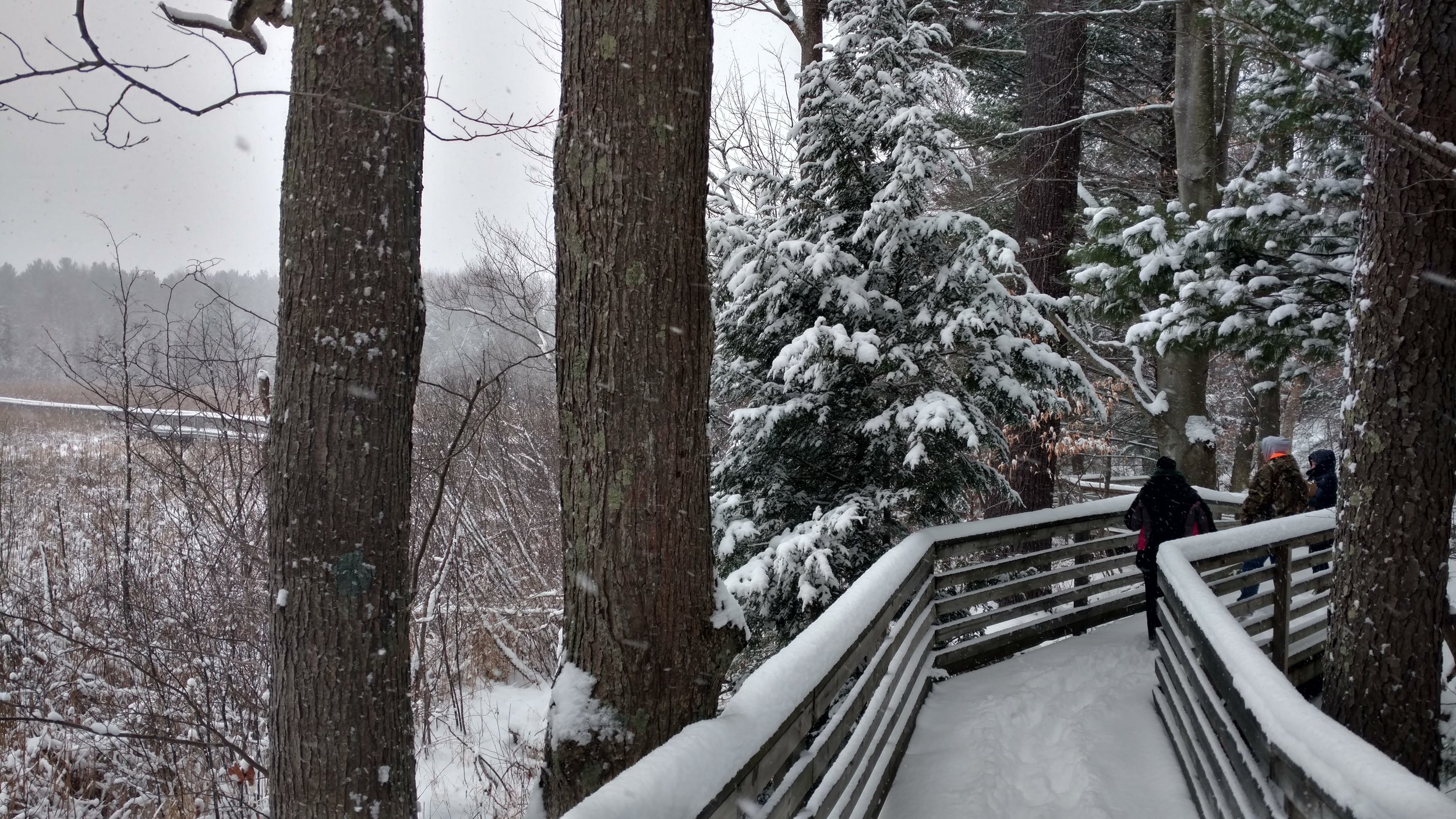Over the course of my two years working in Oceana County, my interest in birding has been
quickly increasing. Two of my coworkers are experienced birders and their knowledge and
enthusiasm about birds is very contagious. Many mornings they’ll arrive with exciting news of
rare birds they spotted. This always inspires me to research birds I was previously unaware of.
The Cerulean Warbler (Setophaga cerulea) is just one of these interesting and fairly uncommon birds that seasonally resides in Oceana County. This small, blue warbler is considered a threatened species, indicating it is facing a risk of becoming endangered. However, here in Oceana County, a thriving population can be found along the White River. Due to this, the White River has been designated as an Important Bird Area for this species by the National Audubon Society and Birdlife International.
The Cerulean Warbler is a small bird typically seen in the upper canopy of mature deciduous
eastern forests especially in river valleys. It is named for the color cerulean which is roughly
between azure and sky blue, although cerulean is dimmer. Like most warblers, the Cerulean
Warbler is sexually dimorphic, meaning the males and females have very different coloring. The
male Cerulean Warblers are bright blue above and white below. They have black streaks on
their sides and back, two white wing bars and a black line, or “necklace”, across their front.
Females and immature birds have grey or greenish upper parts, a pale stripe over the eye, no
streaking on the back and no necklace. Bird guides describe their call as buzzy notes on the
same pitch followed by a longer note on a higher pitch: zray zray z-z-z-zzeeeee.
During their breeding season, the Cerulean Warbler’s range extends through eastern and
central United States and southern parts of Canada, with Oceana County positioned along the
northern edge of their breeding range. During their migration in the fall, the warbler passes
through the southern United States flying over the Gulf of Mexico to the highlands of South
America. They overwinter in forests within a narrow band of middle elevations in the Andes
Mountains of Colombia, Peru, and Venezuela.
The Cerulean Warbler is listed as a threatened species by Michigan State University’s Michigan
Natural Features Inventory and the U.S. Fish & Wildlife Service considers the warbler a species
of special concern. The North American Breeding Bird Survey estimates a decline of over 2.6%
per year between 1966 and 2015, resulting in a cumulative loss of 74% of the population in that
time. A large part of this decline is due to parasitism by the cowbird (Molothrus ater) and this
interaction is intensified by habitat fragmentation. The cowbird is considered a parasite of many small birds because the cowbird will lay its eggs in nests of other birds. The cowbird chick hatches before the host bird hatchlings and will either push the other eggs out of the nest or will outcompete them for food.
Cowbirds tend to stay mostly at the edges of forests, but with forest habitats becoming divided and fragmented, there is less and less contiguous forestland available for the warblers to nest in. Conservation groups have made efforts to find cowbird eggs in host nests and remove them before they hatch. This has had a powerful positive impact on the resilience of the species. We do not recommend the everyday nature lover to undertake this action themselves as misidentification of eggs is a risk that could do more damage than good. If you are interested in getting involved with conservation efforts to help protect warblers and other birds, contact your local conservation district office or local Audubon Society chapter to join a group of experienced conservationists.
There are opportunities to see many of the species of birds that migrate through and breed in
Oceana County (including the beautiful Cerulean Warbler) by attending one of Oceana
Conservation District’s field trips. Contact our office at 231-861-5600 or visit
oceanaconservation.org for information on upcoming birding events.
In 2015, the Oceana Conservation District initiated an effort to document the birds of Oceana
County with the intent of publishing a birding guide for local residents and visiting birders that
features birds of Oceana County and local birding hot spots. A project committee was formed to begin planning and compiling information for the publication. The project committee spent two years conducting bird surveys to provide additional records and to identify birding hot spots described in the book.
The purpose of A Birding Guide to Oceana County is to promote birding in Oceana County.
Compared to other Michigan counties that border Lake Michigan, Oceana County is very
under-birded. This publication is the first attempt to compile bird data for Oceana County and is meant to serve as a baseline document. The authors encourage all birders to help fill in gaps in the birding data by entering their sightings on eBird (ebird.org) or reporting their bird sightings to the Oceana Conservation District. A Birding Guide to Oceana County is now available and can be purchased at the Oceana Conservation District office at 1064 Industrial Park Drive, Shelby, MI 49455.






